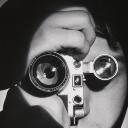Yahoo Answers is shutting down on May 4th, 2021 (Eastern Time) and the Yahoo Answers website is now in read-only mode. There will be no changes to other Yahoo properties or services, or your Yahoo account. You can find more information about the Yahoo Answers shutdown and how to download your data on this help page.
Trending News
i need help with choosing a camera?
https://www.worten.es/inicio/fotografia/camaras-fo... or https://www.worten.es/inicio/fotografia/camaras-fo... or https://www.worten.es/inicio/fotografia/camaras-fo... thanks
i dont really know anything about cameras but love taking pictures and would like to buy one and would like some info about what anyone thinks about them thanks x
3 Answers
- SumiLv 76 years agoFavorite Answer
The first two links worked, but the last one didn't. However, based on the first two choices, I'll assume the 3rd is also a bridge camera.
Not all, but most of us here on this forum are not fans of the bridge camera for very specific reasons:
1. The sensor in bridge cameras is about the same size, with the same pixel size found in smartphones. This is the only physical way of producing such a huge zoom range that can fit in the palm of your hand. However, there's no free lunch in photography. In order to gain something, you must do so by sacrificing something else. In the case of the super zoom that you gain, you do so at the sacrifice of image quality. Because the sensors are so small, and most importantly, the pixels are so incredibly small, the dynamic range and high-ISO performance of any camera using a 1/2.3" sensor is highly compromised. Do not expect these cameras, or any 1/2.3' format camera, to have any better image quality than a common smartphone.
Many people buys these cameras thinking it certainly looks like a DSLR, and it has Program, Aperture & Shutter priority, and Manual, so it's going to give me the same control as a real DSLR. WRONG. Be aware of the aperture settings on these cameras. Most will have 2 or 3 full stops of control which is hardly enough. Apertures control how much light comes into the camera allowing for faster or slower shutter speeds depending upon your specific needs or desires. But it also control the depth of field (DOF). However, so does the focal length of the lens. The short it is, the larger your DOF. So, since the camera has such a small sensor it needs to use a very short lens to obtain an equivalent focal length in 35mm format. This therefore dramatically increases the DOF so much that you don't need small apertures, or f/stops, to increase the DOF. Therefore the manufacturers don't put it in reducing your creative control.
Additionally, because the increase in DOF, you will find it nearly impossible to isolate your subject from the background (i.e. get blurry backgrounds with great bokeh).
The image quality is subjective, some people love these cameras as can be seen in the number of positive reviews that they receive. However, the most common reason for getting rid of these cameras is due to the sensor size. It forces the pixels to be too small which produces too much noise at ISOs above 400, and you can't control your DOF such as when you want to blur out backgrounds. All cameras have a crop factor which is used to multiply the focal length by to get the equivalent focal length in 35mm format. In the case of these cameras, the crop factor is 5.62x. Multiply the true focal length of the camera by 5.62x to calculate what lens you'd have to use in 35mm format to get the same angle of view. However, what they don't tell you is that you have to multiply the aperture by the crop factor too. You have to in order to know what f/stop you'll need to use in order to get the same DOF in 35mm format. For example shooting with these bridge cameras at 20mm @ f/4 will produce the same angle of view and DOF in 35mm format with a 112mm lens @ f/22. That's A LOT of DOF. Reverse that and if you want to get the same shallow DOF that you'd get with a 35mm format camera shot at f/5.6, you would need to shoot a 1/2.3" format camera at f/1 - And that does not exist.
The lens quality suffers too because of its super long length. The longer the zoom, the lower the sharpness. Both, the Fujifilm and Sony have lens that go from about 25mm to 900mm. You just don't need that kind of zoom range. The vast majority of professional photographers will shot 90% of their work with nothing stronger than a 200mm lens, so why do you think that you need a lens that's 4.5x stronger than what a pro would normally need? It's just a marketing ploy used by all brands to sucker you into buying this faux DSLR.
You should also take a look at the range of shutter speeds. The Sony goes as slow as 30 seconds which is great, but the Sony stops at only 8 seconds which is very limiting. the Sony has a top shutter speed of 1/1500th and the Fuji at 1/2000th of second which means you will often need to use a polarizer or a neutral density filter to prevent the images from being blown out and over exposed in brightly lit scenes.
Continuous shooting is a joke with the Sony at 0.8 fps. The fuji is better at 8 fps, but the subject better be still or moving parallel with the camera (not moving towards or away) in order to maintain focus.
So if you're still reading this novel of an answer, you can see why most of us hate bridge camera. I would recommend going with a camera with a larger sensor, as large as you can afford. If that's still 1/2.3", then so be it. Then at that case, go with one with a tamer shorter focal length. Or just buy a used one to get what you need.
- keerokLv 76 years ago
Without clicking any links, I can say that all are easy to use. The Sony has the best build and the most number of features while the Fujifilm should ideally be the cheapest granting all are at the same level.
- ?Lv 76 years ago
The Fujifilm is the better bet, but look for one with a viewfinder. I don t know what Fujifilm were thinking when they left it off the 8600.






